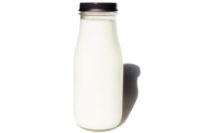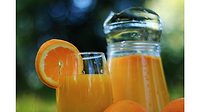FDA urged to deny petition for expanded labels
Filed in late July by the Center for Science in the Public Interest (CSPI), the petition calls for FDA to require companies to disclose the percentages of key ingredients in their products. CSPI legal affairs director Bruce Silverglade explained that the U.S. lags behind Australia, New Zealand, the 15-member European Union, and Thailand, which already require some form of percentage ingredient labeling. "European consumers can readily see that Campbell's chicken soup contains 6 percent chicken, while Heinz chicken soup contains only 2 percent chicken," he said. "It's ironic that those American companies deny the same information to Americans."
"Mandatory information on food labels should be limited to that which is needed for health and safety purposes. The new requirements sought by CSPI -- including percentage ingredient labeling -- do not fit that description," responded Dr. Rhona Applebaum, executive vice president of scientific and regulatory affairs for NFPA. Noting that federal labeling rules already provide for voluntary declaration of ingredient percentages, Applebaum argued that mandatory percentage ingredient labeling would limit the flexibility of processors to source different grades and varieties and ingredients by locking the company into the exact quantities declared on the label.
However, at a Washington press conference, CSPI countered that some manufacturers are featuring certain ingredients in the names of their foods, but provide little or none of those items in the actual product. One example, according to CSPI, is a strawberry yogurt that doesn't contain berries, but rather natural flavors and beet juice simulating a berry color.
CSPI is also petitioning FDA for new rules that would make ingredient lists easier to read, and has hired designer Greenfield-Belser to design an "Ingredients Facts" label incorporating its suggestions. "Ingredient listings are often printed in a small condensed typeface that is difficult to read. The FDA should require larger, clearer print in upper and lower case on a contrasting background following the same successful standards that are used on the Nutrition Facts label," said Greenfield-Belser president Burkey Belser.
Looking for a reprint of this article?
From high-res PDFs to custom plaques, order your copy today!





